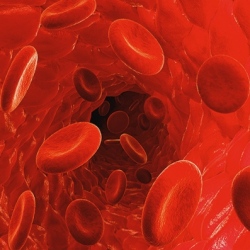
Antibiotics have saved millions and created a world in which lifesaving surgeries are possible. But the overuse of antibiotics threatens to create a scourge of antibiotic-resistant bacteria. Health experts regularly remind physicians to prescribe antibiotics only for bacterial infections.
But too often there’s no easy way for doctors to tell whether a patient’s illness is bacterial or viral or, sometimes, if there’s even any infection at all. "A lot of times you can’t really tell what kind of infection someone has," said Timothy Sweeney, MD, PhD an engineering research associate with the Stanford Institute for Immunity, Transplantation and Infection and lead author of the paper. "If someone comes into the clinic, a bacterial or a viral infection often look exactly the same."
"The idea to look for a diagnostic test came from our previous paper in Immunity last year," said assistant professor of medicine Purvesh Khatri, PhD, the senior author. "In that paper, we found a common response by the human immune system to multiple viruses that is distinct from that for bacterial infections. We wondered whether we could exploit that difference to improve the diagnosis of bacterial or viral infections. But we needed a gene signature consisting of far fewer genes for the test to be clinically useful."
The team used publicly available patient gene expression data to pinpoint just seven human genes whose activity changes during an infection; their pattern of activity can distinguish whether an infection is bacterial or viral.
When pathogens infect the cells of the body, the infection sets off a chain reaction involving the immune system that changes the activity, or expression, of hundreds of genes. Gene expression is the process by which cells extract information from genes and render it in the form of either protein or RNA molecules. Cells have the capacity to express more or less of each molecule, creating a pattern of gene expression that changes in response to external influences, including infections.
The seven-gene test is a vast improvement over earlier tests that look at the activity of hundreds of genes, the researchers said. Because so few genes are involved, the new test will be cheaper and faster, while remaining accurate, they said.
A study in Nepal co-authored by assistant professor of medicine Jason Andrews, MD, revealed that only 5 percent of patients who received antibiotics actually needed them, said Khatri. The Nepalese patients got antibiotic treatment because the drug was cheaper than trying to figure out if they actually needed it. "If we really want to make a difference," Khatri said, "our test has to be more cost-effective than the drug itself." That’s an important breakpoint, he said, since it could allow health-care systems to use antibiotics appropriately and save money at the same time.
The work is part of a global response to the need to reduce the use of antibiotics, driven in part by President Obama’s National Action Plan for Combating Antibiotic-Resistant Bacteria. Today, drug-resistant bacteria cause 2 million illnesses and 23,000 deaths each year in the United States alone, according to the Centers for Disease Control and Prevention.
And, of the 154 million antibiotic prescriptions written in U.S. doctors’ offices and emergency departments each year, it’s estimated that 1 in 3 are unnecessary. A 2014 review of antimicrobial resistance reported that unless something is done to stop the evolution of antibiotic-resistant bacteria, such so-called superbugs could cost the world $100 trillion in gross-domestic-product losses by 2050.
Finally, besides promoting the evolution of drug-resistant microbes, antibiotics increase the risk of side effects such as tendon rupture or kidney damage, and can damage gut and other microbiomes that are essential to overall health.
